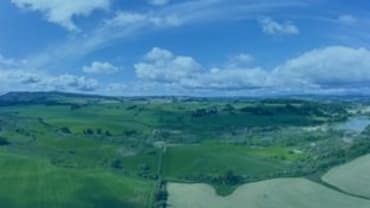Although there is traditionally an acceptance in Scotland of a freedom to roam through most of the countryside, many landowners have legitimate concerns about the new access rights created under the Land Reform (Scotland) Act 2003 and the consequent impact on their ability to manage their land. In particular, the creation of a network of core paths to assist in facilitating these access rights may be a cause for some concern for landowners.
There are some lands over which the access rights created by the Act are not exercisable e.g. land adjacent to houses, land in which crops are growing or on which construction is taking place. However, these exceptions from access rights do not apply to core paths. So, if your land is designated a core path, the public will have greater rights of access over it (and the local authority may be entitled to take action if you obstruct their exercise). Although core paths plans may periodically be reviewed, the chances are that once a core path is established, it is unlikely to be greatly revised.
A core path in the wrong place could therefore result in conflict between the landowner and the public. On the other hand, having a core path in the right place can be a good way to manage public access and draw the public away from areas where difficulties might arise.
Here we look more closely at how core paths have been or will be constituted and the rights and responsibilities of those hosting them on their land.
What is a core path?
Core paths are intended as the spine to the new system of statutory access rights, helping people to exercise their access rights. Physically they will be signposted paths, perhaps with some other facilities such as toilets and picnic areas, and will be marked on the ordnance survey map. Legally they can be any route (whether an existing path or not) by which people may cross land. Since "land" includes water for this purpose, waterways as well as paths may be designated as core paths. Since access rights apply not only in the countryside, but also urban areas, core paths can be designated in towns and cities. The path surfaces will be anything from grass to tarmac and need not in every case suit every user. Those on land will generally be capable of being walked as a minimum. The system of core paths is intended to link into a wider network of paths and to link settlements.
Who can use a core path?
Walkers, cyclists, horseriders, rowers and canoeists have the right to use core paths but those using motorised transport do not.
How is a core path created?
The networks of core paths are defined in "core paths plans". Each local authority and national park authority was required by the 2003 Act to draft such a plan with the purpose of providing the public with reasonable access throughout the authority's area (so facilitating the exercise of access rights).
A core paths plan is drafted by the local authority or national park authority, then subjected to public consultation. Landowners, like other members of the public, have a right to object to the plan. If their objection is not withdrawn they are entitled to have it considered at a public inquiry and determined by the Scottish Ministers. If there are no objections, or the authority resolves all objections, then it can adopt the plan.
The table at the foot of this article shows where each authority has reached in drafting its core paths plan. Some have already adopted and are implementing the plan, while others have not yet reached the stage of consultation. A copy of the plan should be available at council offices, local libraries and online. You can object if your authority is still consulting on its draft. If you wish to do so, Brodies will be happy to assist.
Who will maintain a core path?
The local authorities are charged with ensuring that core paths are kept free from obstruction or encroachment and land managers have a duty to avoid obstructing or deterring access. The local authority has the power to maintain a core path, but not the duty to do so, and landowners are not obliged to maintain core paths either, so physical maintenance of the path infrastructure is therefore a matter of negotiation between the interests involved. In some cases, the local authority will enter land management agreements with landowners to allocate the physical and financial responsibility for maintaining the paths. In many cases, however, it will be left to the landowner to ensure that the path is fit for use.
Liability
The legal liabilities of landowners remain as they did before the introduction of core paths. Landowners are required to take reasonable care in all the circumstances to make sure that people entering land which is under their control will not suffer injuries or damages. For people exercising access rights, the Government's guidance states that the outdoors cannot be made risk-free and that people must act with care for their own safety and that of others. Landowners might be concerned about liability not because their legal obligations have increased, but because, if there is a core path across their land, there may well be more people crossing their land.
It has been suggested that the core paths network could add to the legal liabilities of local authorities. The local authority as access authority is responsible for promoting the core paths in their area and thereby responsible for providing maps and information, the local authority could have an element of contributory responsibility over any information it provides to the public.
Can a core path be closed?
It is not possible for a landowner to make a formal application to the local authority for permission to close a core path either temporarily or permanently (with the exception of where planning permission is granted to develop land the path is on). However, it may be possible for a landowner to close a path temporarily if they have a good land management reason for doing so. Clear as the mud on the path perhaps! If a landowner has to close a path for any reason, they should work with their local authority to ensure that access can still be taken and the path is reopened as soon as possible.
If you would like any more advice on core paths, including how to object to any proposed path which has not yet been adopted please contact your usual Brodies contact.
Please click here for the appendix.











